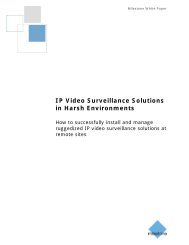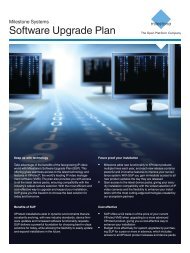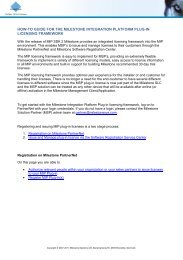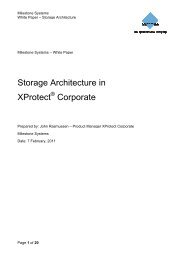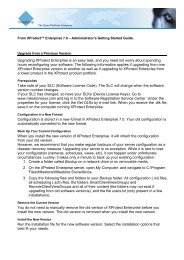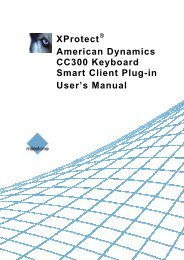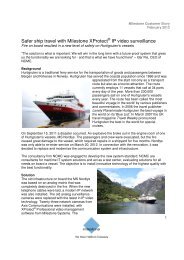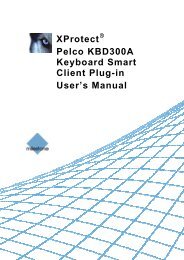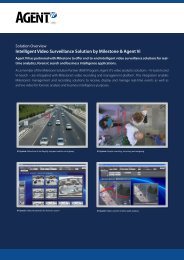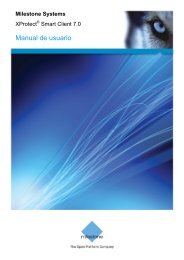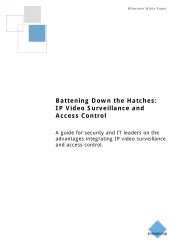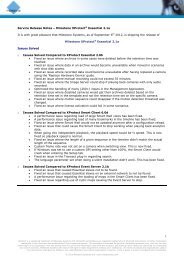XProtect Express 1.1; Administrator's Manual - Milestone
XProtect Express 1.1; Administrator's Manual - Milestone
XProtect Express 1.1; Administrator's Manual - Milestone
You also want an ePaper? Increase the reach of your titles
YUMPU automatically turns print PDFs into web optimized ePapers that Google loves.
<strong>Milestone</strong> <strong>XProtect</strong> ® <strong>Express</strong> <strong>1.1</strong><strong>Administrator's</strong> <strong>Manual</strong>NameApply TemplateCamera NameDefault MicrophoneCameraSelect AllClear AllSet selected template value onselected camerasSet all template values onselected camerasDescriptionSelect which cameras you want to apply the template for. You then use oneof the two Set buttons to actually apply the template.Tip: To select all cameras in the list, click the Select All button.The name as it appears in the Management Application as well as inclients. You can overwrite the existing name with a new one. Names mustbe unique, and must not contain any of these special characters: < > & '" \ / : * ? | [ ]Select required default microphone.Tip: Note that you can select microphones attached to another hardwaredevice than the selected camera.Click the Open button to configure detailed and/or camera-specific settings(such as event notification, PTZ preset positions, and fisheye view areas)for the selected camera.Click button to select all cameras in the Apply Template column.Click button to clear all selections in the Apply Template column.Apply only a selected value from the template to selected cameras.Tip: To select more than one value press CTRL while selecting.Apply all values from the template to selected cameras.Audio recordingWhen you configure video and recording (see "About video and recording configuration" on page 75) for specificcameras, you can determine whether audio should be recorded or not. Your choice applies for all cameras onyour <strong>XProtect</strong> <strong>Express</strong> system.NameAlwaysDescriptionAlways record audio on all applicable cameras.NeverIf you record audio, it is important that you note the following:Never record audio on any cameras. Note that even though audio is neverrecorded, it is still be possible to listen to live audio in the Smart Client.Audio recording affects video storage capacity: Audio is recorded to the associated camera’s database.Therefore, it is important to bear in mind that the database is likely to become full earlier if you recordaudio and video than if you only record video. The fact that the database becomes full is not in itself aproblem since <strong>XProtect</strong> <strong>Express</strong> automatically archives (see "About archiving" on page 118) data if thedatabase becomes full. However, you may need additional archiving space if you record audio.oExample: If you use MPEG4, each one-second video GOP (Group Of Pictures) will be stored in onerecord in the database. Each second of audio will also be stored in one record in the database. Thisreduces the database’s video storage capacity to half its capacity, because half of the database’srecords is used for storing audio. Consequently, the database runs full sooner, and automaticarchiving takes place more often than if you were only recording video.oExample: If you use MJPEG, audio is stored in one record for every JPEG for as long as the audioblock size does not exceed the time between the JPEGs. In extreme cases, this reduces thedatabase’s video storage capacity to half its capacity, because half of the database’s records is usedwww.milestonesys.com 89 Advanced configuration



